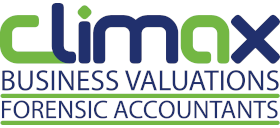Working out how much a business is worth is difficult at the best of times. The “worth” of anything is a very subjective concept as it depends who you are asking at the time. A set of reading glasses made for Mr Smith are worth a lot to him, but not worth much to Mr Jones, as it’s unlikely he has the same prescription (or perspective) as Mr Smith. The common objective of most business valuation assignments is to estimate the “Fair Market Value” of the business, which is usually a hypothetical price that might be agreed between a knowledgeable, willing but not anxious seller and a knowledgeable, willing but not anxious buyer. Sounds good in theory but what does it really mean? How is a business valued in divorce?
If the business being valued is a publicly listed company it’s quite easy to calculate the fair market value as you have a reliable reference point, being the most recent price paid for the shares on the stock market. And if you want to get technical you could calculate a weighted average price for the last week or so. But what do you do if the business isn’t listed on a stock exchange and its shares have never been bought or sold by anyone? What is a business worth, and how do we prove it? This is the key dilemma for every valuation ever undertaken of any unlisted business! But there’s one thing that is for sure in a divorce…each party will have a very different opinion on the value of the business…depending on how they might stand to benefit.
But don’t despair, despite the apparent difficulties in calculating the value of an unlisted or family business, it’s actually quite easy, it’s called the “discounted cash flow” method. All you need to know is the dollar values and transaction dates of every single cash inflow and cash outflow for the business between now and infinity with certainty. Once you know all of those you can apply a risk-adjusted interest rate (called the discount rate) to each cash inflow and outflow and add them all together to get the valuation figure. Can you see a problem with this method?
So you don’t have a crystal ball? Well the next best method is to look at the profitability of the business over the last few years and make an educated guess of the likely “recurring” profitability going forward. You then make an assumption that this exact amount of profit will continue between now and infinity, we call this the “Future Maintainable Earnings” method. Whilst this method isn’t technically as valid as the discounted cash flows method it’s still the method used by most business valuers most of the time, especially in this day and age when crystal balls are hard to come by.
But this is where the fun really begins. How do you prove the Future Maintainable Earnings? The reality is that it can’t be proven because it’s only ever going to be an estimate of a likely scenario based on probabilities. True, it’s an estimate initially based on factual historical data and best-practice assumptions, but it can never be proven because it is still only an estimate by definition. And for some strange reason, judges aren’t too keen on referring to estimates as facts when determining the application of law. So the battle begins between the solicitors. One side saying the valuation is too high and the other side saying it’s too low.
The solicitor arguing the valuation is too high will often argue that there is no “fair market value” as there is no evidence that anyone would want to buy the business because it relies too much on the owner to keep it afloat. They say that no market value means it’s worth nothing.
The solicitor arguing the valuation is too low will often argue that the business gives “special benefits” to the existing owners that make it worth much more than the financial data or the lack of buyers would indicate. They further argue that what the market would pay for the business is irrelevant because the business is not currently up for sale and probably never will be.
Both arguments appear quite reasonable so which one is right? Well it’s up to the court to decide fair value based on all the facts. The relevant cases go back as far as 1907 (Spencer vs The Commonwealth) and unfortunately there is still no clear universally accepted method to calculate the value of an unlisted business in divorce.
However, a generally accepted concept has emerged that the objective of a business valuation under the Family Law Act should be to calculate the Value to the Owner (VTO), not necessarily the market value of the business. As you can imagine this makes the valuation a very subjective exercise as the value to the owner can include those “special benefits” that can be quite intangible and impossible to measure.
If you are part of a divorce or separation that involves a small business, the moral of the story is to engage a professional business valuer or expert witness to put together a written valuation report that transparently addresses all of the relevant matters where any subjectivity is possible. That way you can be proactive in substantiating your argument beforehand and you are therefore less likely to be disadvantaged in settlement negotiations or judgements where a figure can be plucked from the air by someone else. Forewarned is forearmed.

